“Golf is the closest game to the game we call life. You get bad breaks from good shots; you get good breaks from bad shots – But you have to play the ball where it lies.”
~Bobby Jones“Gold jacket, green jacket, who gives a shit.” Happy Gimore
It was one of the most interesting things I’d ever witnessed in athletics.
Nearly a decade ago, I was caddying for my brother, Jordy, in the Maryland Open golf tournament— a tournament open to pros and amateurs. Ever since high school, Jordy had decided that he was going to really get good at golf—perhaps play professionally. Now a scratch golfer (a threshold towards expert) he was playing in one of the biggest tournaments in Maryland featuring the best competitive golfers in the state.
At 6’3 and a lean frame, Jordy had a decided advantage over the field. Old-timers like to call it “the long ball”; I like to call it the— holy-shit-Happy-Gilmore ball. Tomato, tomahto.
Jordy could hit the ball so far and high that it gave him the opportunity to take shots that 95% of the field could not even consider. Like playing Tiger Woods Golf on N-64, Jordy wouldn’t merely aim down the fairway like the rest of 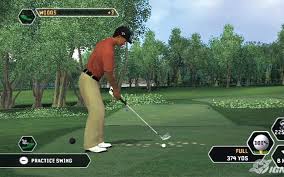 these clowns, but, rather, over the trees, and through the woods (to grandmother’s?), cutting the hole in half, and consistently putting him 50-100 yards ahead of his competitors.
these clowns, but, rather, over the trees, and through the woods (to grandmother’s?), cutting the hole in half, and consistently putting him 50-100 yards ahead of his competitors.
And on this particular day, Jordy’s “long ball” was in full effect.
He also wasn’t missing a green. It didn’t matter where his drive went— he’d follow it with a deadly accurate, green-bound strike. Like Vince Vaughan quarterbacking in Wedding Crashers, Jordy was putting the ball wherever he wanted. “Throwing darts” as the super-cool, pastel-visor-wearing, golfers say.
Well, that was until we actually reached the greens…
Although Jordy was hitting the ball phenomenally with 92.9% of his clubs, it was that 14th club in the bag— the  putter— that was proving to be a massive downfall. And as with swift-footed Achilles, the tiny, weak heel of an otherwise masterful composition was leaing to surprising disaster.
putter— that was proving to be a massive downfall. And as with swift-footed Achilles, the tiny, weak heel of an otherwise masterful composition was leaing to surprising disaster.
Striking the ball as well as he was, he still was not scoring. He missed the cut, coming away with an apparent hole in his game, and the sickening feeling of an opportunity squandered.
OF COURSE, THIS IS NOT the end of the story. Jordy, like Mr. Gilmore, did eventually learn how to putt in competition (“Uh oh..”). And I’ll get to that inspiring redemption story at the end.
But first, I want to share with you what was his more enduring contribution over the years. It was through his transformation that Jordy taught me a string of lessons— ones that I have applied with, echemm, moderate successes to golf (i.e zero), but with at least a positive trend in the general scheme of life.
I think the most memorable lessons come from watching others overcome obstacles in pursuit of things they care about. Perhaps this is why writers often use stories of great generals, coaches, or artists to make their points. It starts with a dream, the dream is shit on by reality, and then, with enough persistence, the reality is molded into some form of the dream. And in this way, Jordy continues to form his own.
His love and pursuit of golf excellence and the obstacles he has encountered, have provided lessons on both golf and life, and I’ve been paying rapt attention. Though I probably haven’t fully embodied any of these principles— I feel the very awareness and contemplation of them gets me a tiny bit closer to their realization.
Last year, I told you why we make a good team. This year, I’ll tell you how sometimes the team dynamic is him as teacher and me as student.
Here’s what I’ve got so far…
- How To Aim
- Just Make Solid Contact
- That’s Why You Have A 5-Iron
- Swing Easy When It’s Breezy
- You’re The Artist
- Don’t Be A Hero
- Stay In The Present, Stick To The Process
- Be An Athlete
- Drive For Show, Putt For Dough
BONUS: The Most Important Lesson
Nine (+ one) Lessons From My Brother on Golf and Life
(1) How To Aim
“It’s often not clear how to start on a stretch goal. And so, for a stretch goal to become more than just an aspiration, we need a disciplined mindset to show us how to turn a far-off objective into a series of realistic short-term aims.” Pulitzer-Prize winner and Best-Selling Author, Charles Duhigg, Smarter, Better, Faster.
“Damn it! How the fuck does this keep happening?!”
I kept hitting the ball dead-straight, I thought, but the ball kept ending up about 20 yards to the right of the green. I continued to see the result, shocked and confused.
“You’re aimed dead-right,” said my brother. I was resistant. What?! But I just aimed. I saw the target and adjusted. What am I missing?
Well, it turns out I was missing a simple, but crucial, step in the aiming process. I had my ultimate target in mind, but I forgot to do something just as important: cut down the distance.
My brother told me to stand next to the ball again. “Ok,” he said, “now look at the target.” ( ButI’ve done this!). “Ok, great, now look at the ball.” (Uhh, Duhh!). “Now, make a line from the target to the ball with your club.” (OK…). “Great. Now pick a spot one foot in front of you that falls within that line. That is your new target. Aim at that spot. Hit the ball.” (Hmm, ok I guess I’ll try it, but it doesn’t feel different…).
I hit the ball, it landed on the green, ten feet from the hole. A simple fix that lead to a massive turn around.
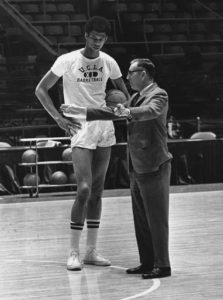 When NCAA Hall of Fame coach, John Wooden, was coaching players, he first showed them the major goal of the season. Then that goal was broken down into games, then practices, then 30 minute sections of practice, then specific basketball moves to learn, and then those moves into those component parts. Wooden broke down each part of practice to the minute to keep them on track, each day reminding them of the greater goal.
When NCAA Hall of Fame coach, John Wooden, was coaching players, he first showed them the major goal of the season. Then that goal was broken down into games, then practices, then 30 minute sections of practice, then specific basketball moves to learn, and then those moves into those component parts. Wooden broke down each part of practice to the minute to keep them on track, each day reminding them of the greater goal.
There’s tons of research on the combination between having a long-term target, but aiming daily at the few feet in front of you. You have to break things into achievable chunks, the researchers say. Concentration on a far away target can get blurry and overwhelming. But Specific, Measurable, Achievable, Relevant, Time-based (S.M.A.R.T) daily or weekly goals, can keep you in motivated focus, and keep your aim more accurate.
Application: One goal I have is to write a book. A book can be a compelling goal, but pretty overwhelming. Just like the hole 150 yards away, direct aim can be tough. For that reason, writers say, you want to break it into chunks of manageable pages, word counts or topics. In other words, you want to cut down the distance the way Jordy showed me on the golf course. A book is hard to write, 500 words per day— not as hard.
I’ll paraphrase the (GREAT) writer Tim Urban: you don’t “build a house”— no one does. You put one brick on another brick for a long time. And then, hopefully, it turns into a house.
Note To Self: Make a general line to the target, then pick spots 6 inches, 12 inches and 18 inches in front of me (my bricks). Then, I’ll, periodically, recalibrate keeping in mind my large, brick house, my ten foot birdie putt, or my novel.
(2) “Just Make Solid Contact”
“Our life is frittered away by detail. Simplify, simplify.” Thoreau
“Stop thinking. Just make solid contact with the ball.,” Jordy says.
I have the tendency to get “in my head” when I am on the golf course (and off it). But when Jordy is there and he sees me struggling, he continues to remind me to just make solid contact. “You can’t fix it on the course, that’s for the range, just use what you have.”
If you’ve ever gotten a golf lesson and then tried to play a round, you probably know the feeling. You try to incorporate the eight different instructions into your game, end up over thinking it, and slicing the ball 50 yards right into a port-a-pot.
I think this over-thinking of every detail is, in part, due to my need for perfectionism. But, as the author Elizabeth Gilbert has said— perfection is not a virtue, but a vice. It is borne out of fear, baseless expectations, and hesitation.
And it has the opposite effect for me. Rather than moving the result closer to perfect, I actually end up making things much worse. But when I heed his advice, and just try to make good contact, I end up hitting the ball half-way decent.
Note To Self: When you have “writers block” — remember -stop being perfect. Hemingway cure is simple but effective: just start with one true sentence. Just make “contact” with the page, and things will start to fall into place.
(3) “That’s Why You Have the 5 Iron”
We were playing with my dad in Boca Raton, Florida with the rest of the Hebrews. It was at that perfect, golden time of day in late December (back in ’63). The weather was a perfect 72 degrees, the breeze came in lovely, soft wisps, and my golf… was as shitty as ever.
For some reason, I just wasn’t able to hit my irons as far this year. A huge hit to my ego, and likely one of my many swing ailments. Apparently your swing begins to falter after not playing for 10 months. That’s why golf sucks.
In any event, my 6 iron, which I used to hit 190 yards or so (and then flex), I was only able to hit about 170-175. So I was consistently landing 15 yards short of my target. I’d get frustrated: “fuck, my six is short every god-damn time!”
“Perfect,” Jordy’d said, light-heartedly, “that’s why you have a five-iron.”
It’s a simple lesson, but hard to register over the deafening cries of pride, or some unreasonable clasping to past circumstances. Maybe I should stop trying so hard to do things I used to be able to do, or things that make me look stronger or faster, and use the tools I have at my disposal.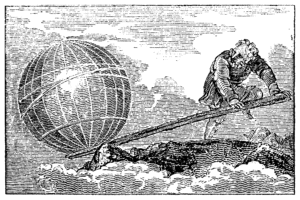
To get Ancient Greek on yo’ ass— imagine if Archimedes would have said: “Give me a lever long enough and a fulcrum on which to place it, and I shall move the world… Eh, but, levers and fulcrums are for pussies— hand me that big globe, Atlas— I want to feel the burn!!”
Note To Self: Stop trying to rip open all these cardboard boxes [insert Curb clip] from Amazon, and just use a pair of scissors…
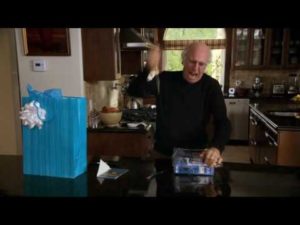
(4) “Swing Easy When It’s Breezy”
“It’s dark because you are trying too hard. Lightly child, lightly. Learn to do everything lightly. Yes, feel lightly even though you’re feeling deeply. Just lightly let things happen and lightly cope with them.” Aldous Huxley, Island
I used to try and kill the ball. I would swing really, really hard. My logic: if I swing really hard, I hit the ball far, hitting the ball hard and far is good. Seems sound, right?
This issue is that, as Jordy showed me, neither of these turn out to be true. First, there really isn’t a relationship between swinging hard — as in clinched, breathe-holding effort from your body— and hitting the ball far. A crucial misunderstanding here is that swinging hard is the same as generating power or swing speed.
Anyone familiar with jujitsu, or boxing, or Bruce Lee movies knows this huge, mustering of effort with your arms is a waste of energy and ends up in surprisingly little power. The power comes from the lower body and strategically-directed force. A tiny move with right-minded power and torque can knock an opponent out, while fervent large swings at his head will be paltry in comparison. Go out on the golf course, and slow down your effort— and you’ll probably hit the ball as far as you’ve hit it all day.
But even metaphorically, this analogy holds up. Often, as many have written, the harder I try to do something, the further I get from attaining it. Yet, when I stop trying so hard, I seem to end up attaining the thing I used to over-try for. This has been true for me in many pursuits— acting, meditation, writing, diet, even travel.
Note to Self: The literal reading of this saying is misleading: ifthe conditions are windy— slow your swing down. But, what you don’t learn until you’re as good as Jordy is, first, it’s best to always assume it’s “breezy.” Second, it isn’t about “slower swing speed” per say— it is about slowing down the “trying-to-hard” part. The gritting of teeth, tension in your tummy, big hulk yell as you swing at the ball, or the page, or the camera, or the drum set. Less is more.
(5) “You’re The Artist”
“Follow your passion. Stay true to yourself. Never follow someone else’s path… unless you’re in the woods and you’re lost and you see a path. By all means, you should follow that.” Ellen
Welp, another “trying hard” swing off the tee, and another shot into the woods. When I got to my ball, I looked back at Jordy sitting in the cart and ask him: “How should I hit this one?”
“You decide,” Jordy would say, and then, playfully, but serious, “You’re the artist, you paint the picture.” I never had any idea what the hell he was talking about.
Turns out, he was trying to teach me another lesson. That god-damn wise bastard.
He was saying two things, I think. First, almost every shot you have on the golf course is unique; no one has ever taken this exact shot. This is true because of (a) the exact circumstances (i.e. position of the ball relative to the hole, the lie of the ball, the weather conditions, the ground conditions, the green conditions, etc) and (b) the person considering the shot (i.e. how you perceive given your biology, psychology, and past references).
Second, there are a million ways to get to the hole. There are way less ways to screw up— like jacking the ball directly into a tree trunk and try and avoid the ricochet. And one way to get yourself into trouble is by not committing fully to a shot, or doing a shot that some other person sees as “right” but you do not.
Because of this fact — it is much more beneficial, in the long-term, to go off of your own intuition. Now, at first, as research has shown us, your intuition is going to suck butt. But, over time, you will develop an intuition (unless you play twice a year like me) and have a good feel of where to go.
The expert, I think, should be giving you frameworks rather than factual recommendations. Different ways to consider your problem, not solving them for you. Because they can’t— it’s your fucking problem.
I’ve found this in my own life. Many people can tell you what path they would take— or you “should” take— as if there’s a normative way to follow. But ultimately, as the writer Anna Taylor said, “Nobody else gets to live your life. You are the artist. Paint your picture. Dream your own masterpiece into being.”
Note to Self: Look at the shot, visualize an outcome, and then make a fucking choice and commit to it. Some work, some don’t, learn and move on. Oh, also, try to avoid hitting directly into a sycamore five feet in front of you and knocking yourself unconscious…
(6) “Don’t Be A Hero”
“Placing the ball in the right position for the next shot is 80 percent of winning golf.” All-time Golf Great, Ben Hogan
Sometimes (almost every hole), I’ll be in the sand trap, or in the rough to the side of the hole. Frustrated and impatient, I’ll want to “get back on track” and fast— so I would always try and hit some heroic shot—a Michelson flop, perhaps.
When I would inevitably skull the ball 30 yards over the green into some creek, Jordy would look at me and say: “Stop trying to be a hero. Hit the ball in the middle of the green. Hit the easy shot.”
This is the mistake of an amateur. In the long-run, trying to make the heroic, low-probability shot is probably a poor plan as we can learn from (most of) th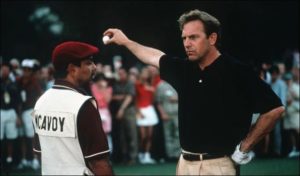 e movie, Tin Cup. Better to hit the high percentage shot into the middle of the green, take a two putt and avoid the quadruple bogey.
e movie, Tin Cup. Better to hit the high percentage shot into the middle of the green, take a two putt and avoid the quadruple bogey.
Golf Is Not A Game Of Perfect, says Dr. Bob Rotella. Just don’t take yourself out of a hole or a round. This is Rule #1 from Buffett and Munger: “don’t lose money” or the “don’t get knocked out of the game” advice from Ray Dalio. It’s what Benjamin Graham calls the difference between an investor and a speculator.
The Point: The compounded error is exponentially worse than the initial misstep. We all misstep, but one difference, it appears, between the quick and the dead, is that we don’t allow the misstep to put us into a place from which we can’t recover.
Note to Self: OK, we’re in trouble, what is the easy shot in the middle of the green here I can use to stop the bleeding? Just get to the next hole.
A funny application: being horribly hungover or sick. You cannot solve the problem in five seconds with the “detox hangover cure” you bought at the Las Vegas convenient store. In fact, the research says we don’t really know much about hangovers or dehydration yet.
Just take the easy shot in the center of the green: Drink some water (not 6 gallons, start with a glass) and eat some green light foods (not “something greasy”), you’ll be better tomorrow than you were today.
(7) “Stay In The Present, Stick To The Process”
“A golfer has to learn to enjoy the process of striving to improve. That process, not the end result, enriches life.” Dr. Bob Rotella, Golf Is Not A Game Of Perfect
“Damn! The whole round ruined. Why did I do that?!”
A duck-hook into the left trees— another shot in the woods. The good thing about playing golf with me— a lot of walking in nature. You’d think it’d be a little more peaceful though…
And just when my frustration was about to hit a tipping point, I hear Jordy annoyingly chime in, in a characteristically sarcastic voice, with a phrase he had obviously just read in one of his stupid-ass, golf-books, “just stay in the present, stick to the process.” Presently, I wanted to process my 7-iron through his mother-fucking face. (Woosahhhhh).
The annoyance didn’t end when we got off the course either. It continued, as many of Jordy’s most annoying catch-phrases do, into all facets of life. We’d be eating— “stick to the process”. We’d be on a plane— “stay in the present.” I just lost a big lacrosse game— “DON’T even say it, Jordy!”
It wasn’t until years later that I understood what he was talking about. It hit me when I started with all this psychology /meditation / reading /writing/ “self-discovery” nonsense. This was precisely the lesson being taught in all of the seminars, books, and classes: stay in the present, stick to the process. Wouldn’t ya know it, apparently my brother was a god-damn monk.
To gain any form of mastery or skill, there is a process. That process often takes hours and hours and hours of boring practice — often with no major improvement for long stretches of time. But you must, the books say, stick to the process. You must trust it. Stay in the present— don’t think about the result, just stick to what you are doing and trust it.
Note to Self: To get dramatic again, the present is all we really know or have. Spending time in the past (regret or nostalgia) or in the future (wishing, planning, anxiety) can be harmful. Returning to the present and the process— whatever that is, is the best way to get to where you want to be.
OR if you want to be bat-shit confused — watch this paradoxically awesome but horribly enigmatical video by Sam Harris illustrating this point.
SIDE-NOTE TO ANYONE LISTENING: why is “bat-shit” associated with crazy? You never hear anyone say — he’s bird-shit nuts, or that chick is crab-shit bonkers?. I think we should start that trend…
(8) Be An Athlete
“You look like a fucking robot,” my brother would shout at me. “Be an athlete!”
When I play golf, I tend to look a little robo-tronic. I am thinking so much about keeping my left arm straight and keeping my weight in one place and my head in another and swinging through the ball and taking my club back in a certain way, that I forget to just swing fluidly.
This is a symptom of learning that has reoccurred for me over and over. When I first dive into a new physical skill, I tend to absorb the material intellectually. And, when I then try to translate that into bodily knowledge, I end up looking like Jonny#5. The results are horrifying.
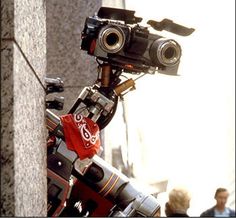
When I was in Spain a couple summers back, I found this same problem with language learning. The teacher would shout at me, don’t translate in your head, don’t think, just answer en Espanol. Because I wasn’t doing that, my language would come out mechanical, just like my swing.
I also found that even when I did deliver the right lines, I had zero personality. In Spanish, my personality is equivalent to a seven-year-old recluse. My voice is weird, I’m not fluid, and I’m certainly not funny.
An interesting remedy to this is when you are drinking. Drinking shuts down some of that “reasonable” oversight from your mind, and eliminates inhibitions. Funny enough, not only do you think you are better at foreign language when drunk, but you actually might be. If you aren’t slurring, the deactivation of your neocortex leads to just saying what is in your mind, not checking it first. [Oooo “the neocortex, the neocortex” reaallll smart, brain-boy].
Note to Self: As with “Being The Artist”, or “Swinging Easy,” you will at first be horrible at this because you have developed no muscle-memory. But, over time, keeping this concept in mind could clue you in to where you are heading. So, be an athlete, not a robot.
(9)“Drive For Show, Putt For Dough.”
This is a well-known golf truism, but, returning to the Greek tragedy we opened with— Jordy has shown me in person the reality of this saying.
The saying means that while hitting big, Happy-Gilmore-like smashes off the tee are fun and look cool, it is making the putts that really drive this game. The putts being the much more boring-to-practice, and much less glamorous counter-part. It’s great to start with a bang, but better to finish with one.
It seems to me, this saying, like many of the others here, comes down to forgoing ego-ish activity in order to work on what actually works. I started playing golf, enamored with hitting the ball far and swinging hard. I hardly ever practiced putting. Putting is boring; driving is fun, feels good, and looks impressive.
Note to Self: Is this thing you are doing right now for “show” or for “dough”?
When I used to put a bunch of weight on the bench press at the gym in college and then struggle to get it up with good form— was that for show or dough? When I used to go to a coffee shop with some important or “smart” looking book— show or dough? When I was worried about getting “A’s” throughout school — perhaps at the sacrifice of actual learning— show or dough?
Now, I’m not saying to totally do away with the “Show” activities—those can be a lot of the fun. But perhaps shift the importance scale. Merely knowing where the “dough” is may help me prioritize the things that mean the most in the end.
Jordy’s Redemption and His Biggest Lesson
THROUGHOUT THE DAY at that hard-to-swallow MD Open, Jordy would tell me that, standing over the ball on the green, he had zero confidence. It was almost as if he was putting for the first time— as if he hadn’t practiced religiously for the previous 5-6 years on exactly that. He felt that the hole looked a million miles away, and that the ball could not be controlled by his putter. A helpless feeling.
But following that poor performance, instead of burying his head in a bunker somewhere, instead of his will being weakened, it was awakened. Like Michael Jordan being cut from his High School Varsity team, or being consistently beaten by the late-80’s Pistons, determination was not sunk, but summoned— and so he hit the practice greens.
A small win came just 13 months after that Ray Finkle-like, “kick heard ‘round the world” performance. Jordy was playing in another tournament and just one shot off the lead early on. Jordy, never having played on a college team, was surrounded on the board by more traditionally qualified candidates. The tournament’s past winner, for instance, played for UNC Charlotte and had won several college events, and many amateur tournaments since. Another player was a friend of Jordy’s, an alumni of the Loyola golf team, and a deadly accurate putter.
Though he was behind, Jordy just continued focusing on the present and the process, being the artist, and swinging easy. When it came to the green, now, rather than feeling a million miles from the hole, he felt that the hole looked close and large— like a baseball looks to a hot MLB batter. He focused on just making contact, being an athlete, hitting the smart shot, and, of course, putting for dough.
At the pivotal hole 8, Jordy took the lead, sinking a 20-foot putt for birdie. And he’d never look back, with birdies on 3 of the final 10 holes. The headline covering the tournament read something like: “Steinfelder wins with all-around game.” Fuck yea.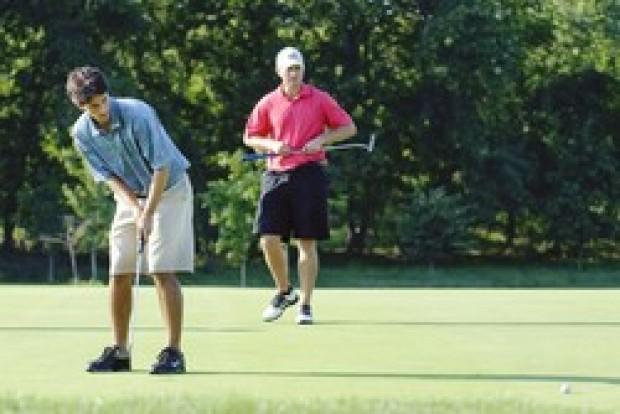
IN THE YEARS THAT FOLLOWED, Jordy’s had ups and downs on the golf course. He played in the pro-circuits in Orlando for a while and had some decent success. But then, obstacles struck again as he sustained a pretty bad shoulder injury— stripping one of his key assets— the far-as-shit-Happy-Gilmore-like, long-ball. But, again, Jordy’s love for golf, and his focus on long-term success, has had Jordy, slowly but surely, battling back.
This past year, Jordy won the Woodholme Country Club club championship. He had done this before (in fact, he was the youngest player ever to win it) but what made this win so great to me was— he won it in exactly the opposite way he’d missed the cut at that Maryland Open. This time, he was striking the ball horribly, but it was his putter and short game that brought him the eventual victory.
And it was here that Jordy’s actions taught me the greatest lesson of all— not with his words, but with his actions. It’s a lesson about under-dog resilience; a story about intractable love for a game and a pursuit of mastery. In the last 18 or so years, the obstacles have been many, but as Ryan Holiday has told us— the obstacle is the way.
We can only hope to follow his lead— at least I do. I’m glad I have a big brother with that type of persistence.
Recently, Jordy told me that his distance is almost fully restored (having relentlessly worked to strengthen). With the all-around game hitting, and the long-ball returnith, I wouldn’t be surprised to see Jordy back on some big stages before long.
I’d keep my eye out— in about 20 years— on those PGA senior tour leaderboards…
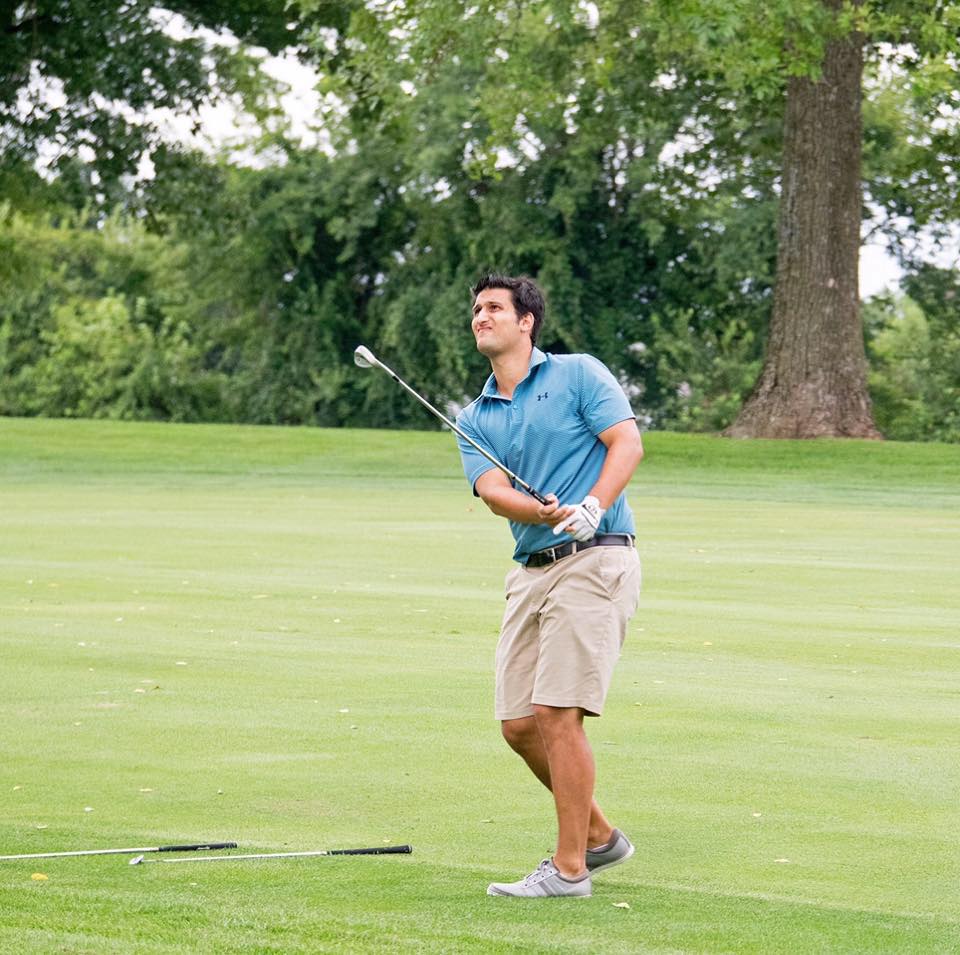
Besos,
Justin
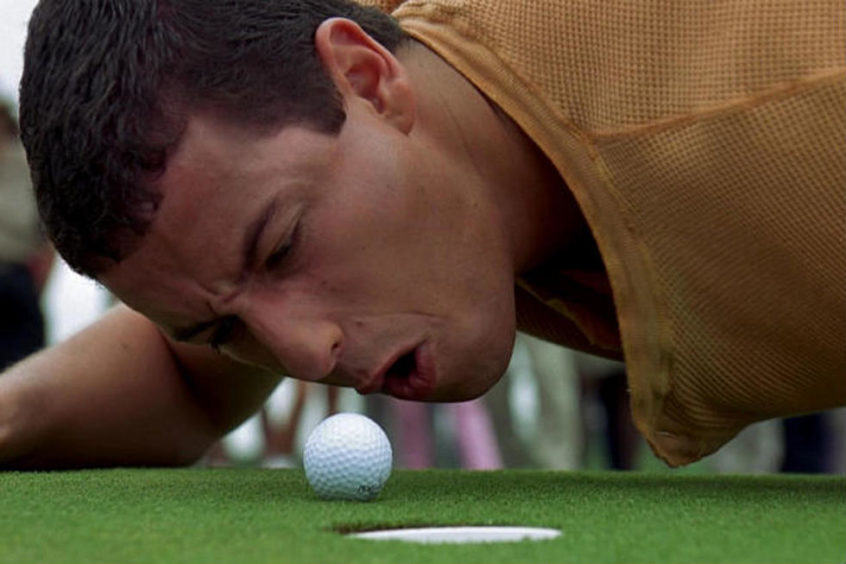


One Comment on “Golf and Life: Lessons From My Brother”
Well written and thanks for the kind words. Incredible how you could take my cheesy/goofy lines and learn lessons from them. LOL